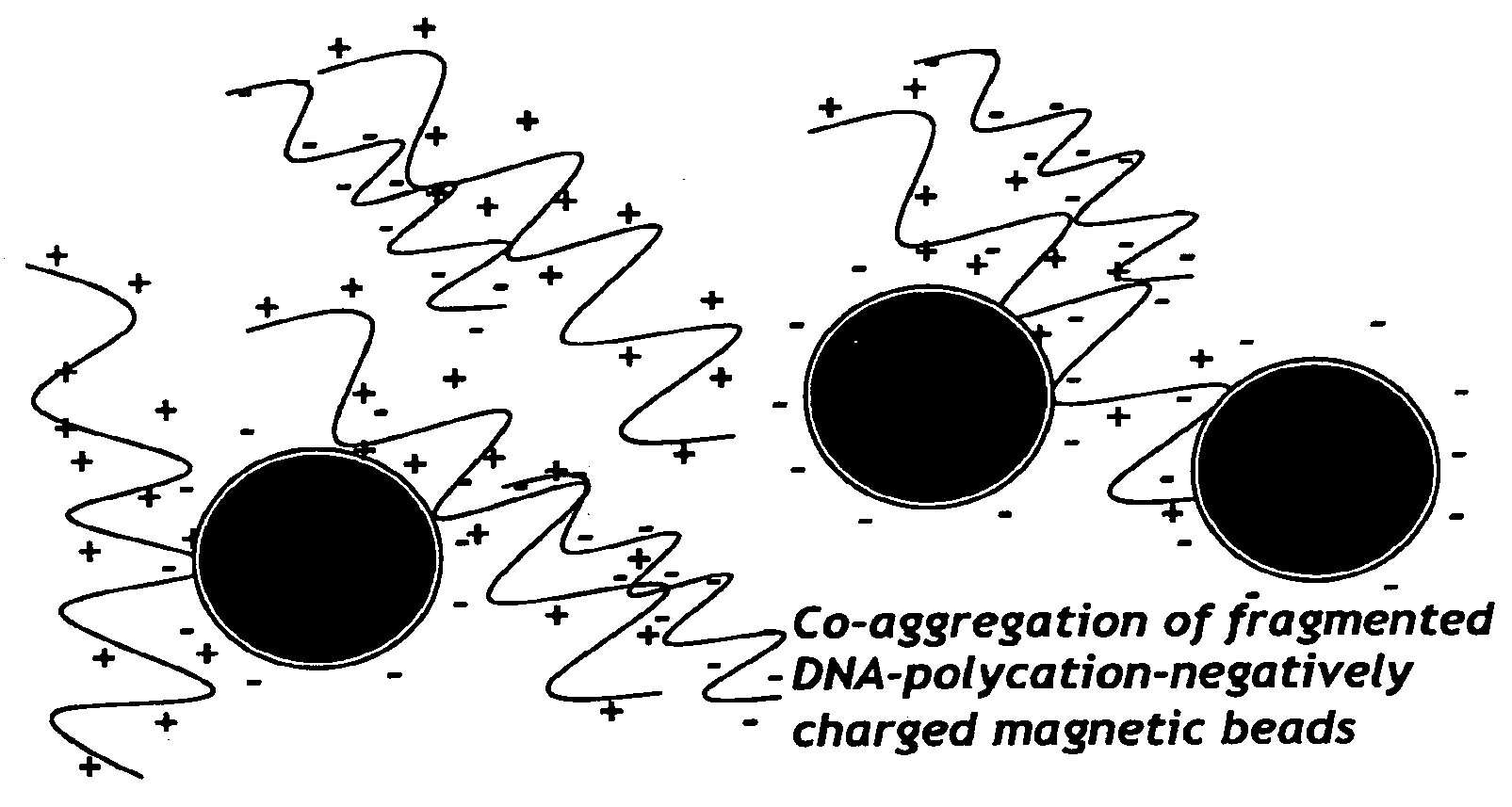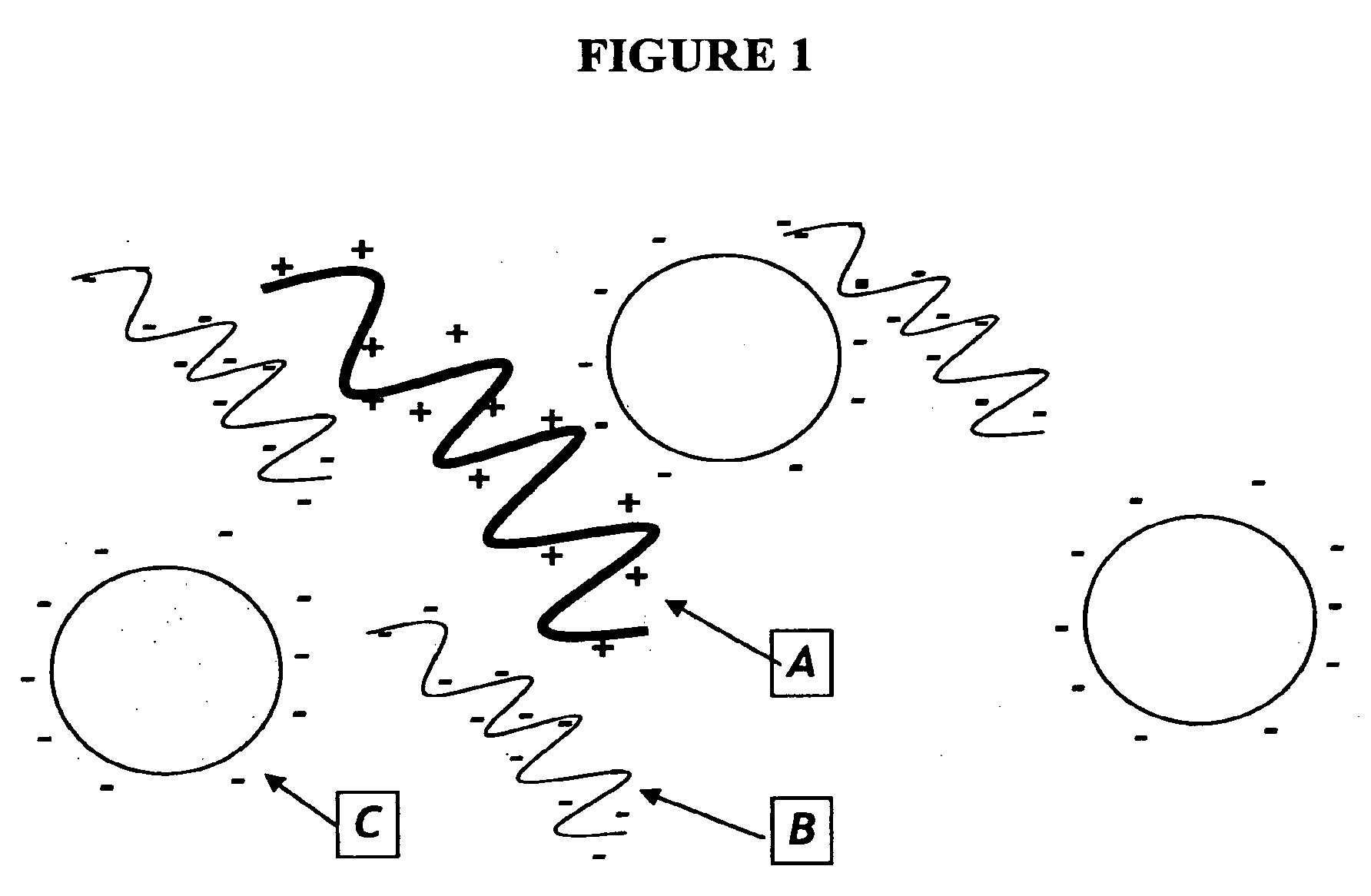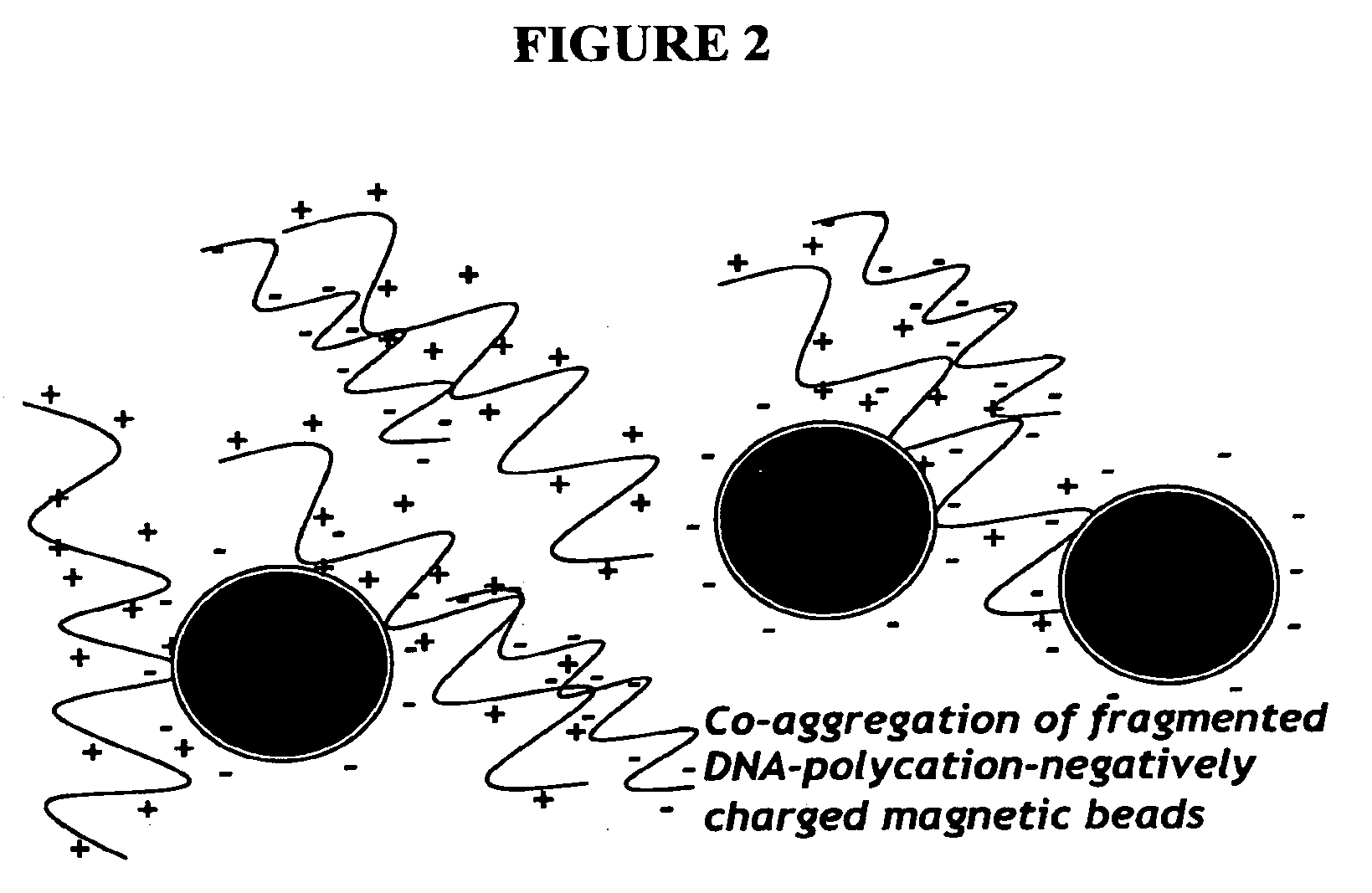Nucleic acid separation and purification method based on reversible charge interactions
a charge interaction and nucleic acid technology, applied in the field of nucleic acid purification, can solve the problems of difficult removal, high cost, and high cost, and achieve the effect of high ionic strength
- Summary
- Abstract
- Description
- Claims
- Application Information
AI Technical Summary
Benefits of technology
Problems solved by technology
Method used
Image
Examples
example 1
Polybrene and AMPure™ Bead Purification of Fragmentation and Labeling (F&L) Product
Concept
[0063]Polybrene will bind negatively charges molecules (DNA and carboxylated beads) which can then be placed on magnetic stand and washed with H2O. Resuspension of beads in 0.2M citrate should remove the DNA from the beads. The following experiment was performed to test this concept.
Materials
[0064]Polybrene[0065]Unpurified fragmented and biotin labeled cDNA[0066]H2 O[0067]SSC (0.3M citrate)[0068]AMPure™ beads (Agencourt)[0069]1 Dilutions of polybrene in H2O
polybreneH201 / 510401 / 10 5451 / 505 (1 / 5) 451 / 1005 (1 / 10)451 / 5005 (1 / 50)451 / 1000 5 (1 / 100)45[0070]Bead preparation: AMPure beads were washed (1 ml in 1.5 ml tube, spin 16K[0071]2 rpm 1 min, remove supernatant and resuspend in 1 ml H2O.[0072]Set up binding solutions (add polybrene and EtOH to fragmented and biotin[0073]3. labeled cDNA targets before beads)
F&Lpolybrene100%tubecDNAbeadsH2OpolybrenedilutionEtOH1509050(washed)2509005undil(washed)3509...
example 2
[0084]The experiment described in Example 1 was repeated using the full concentration of polybrene (10 mg / ml in water); wash complex of particles and targets twice with 70% ethanol, and resuspend particles for target elution with IX hybridization buffer, 2× hybridization buffer or 20×SSC. In addition, performance of the method was assessed using washed particles or unwashed particles (Agencourt magnetic particles in binding buffer).
BeadsElutionng / μlYield (ug)% recoveryto2washed1X hybe70.263.5166.3%216unwashed1X hybe25.831.2924.4%3washed2X hybe69.573.4865.6%7unwashed2X hybe20.261.0119.1%4washed20X SSC59.232.9655.9%8unwashed20X SSC23.091.1521.8%DyeEx197.744.4083.0%DyeEx296.774.3582.2%
Conclusions
[0085]AMPure beads should be removed from binding buffer and resuspended in water.
[0086]1× hybridization buffer is sufficient to elute target
Comparison of Method of the Invention to Spin Column Purification Procedure for Binding to GeneChip™ Array
[0087]GeneChip™ arrays (U133A v2) data summary:
S...
example 3
Purification of Fragmented and Biotin Labeled Targets Generated by RNA Amplification using the Ovation™ System with Polybrene and AMPure™ Magnetic Beads
Concept
[0089]Attempt to increase recovery of fragmented and labeled cDNA by increasing the amount of polybrene, increase beads, increase volume of washed beads thereby decreasing the ionic strength of the cDNA-polybrene mix. The following experiment was performed to test this concept.
Materials
[0090]Polybrene[0091](10 ug / ml)[0092]unpurified F&L[0093]cDNA[0094]1× hybe cocktail[0095]AMPure beads[0096]1 Make 1× washed beads[0097]spin down 0.5 mL beads at 16K for 1′[0098]Remove sup[0099]Resuspend in 0.5 ml H2O[0100]2 Make 2× washed beads[0101]spin down 0.5 mL beads at 16K for 1′[0102]Remove sup[0103]Resuspend in 0.25 ml H2O[0104]3 Set up purifications[0105]Mix cDNA and polybrene by pipette[0106]a mixing[0107]b Add beads and mix by pipette mixing[0108]c Incubate at RT for 5 minutes[0109]d Place on mag stand[0110]e After 5-10 minutes or cle...
PUM
| Property | Measurement | Unit |
|---|---|---|
| Volume | aaaaa | aaaaa |
| Volume | aaaaa | aaaaa |
| Volume | aaaaa | aaaaa |
Abstract
Description
Claims
Application Information
 Login to View More
Login to View More - R&D
- Intellectual Property
- Life Sciences
- Materials
- Tech Scout
- Unparalleled Data Quality
- Higher Quality Content
- 60% Fewer Hallucinations
Browse by: Latest US Patents, China's latest patents, Technical Efficacy Thesaurus, Application Domain, Technology Topic, Popular Technical Reports.
© 2025 PatSnap. All rights reserved.Legal|Privacy policy|Modern Slavery Act Transparency Statement|Sitemap|About US| Contact US: help@patsnap.com



